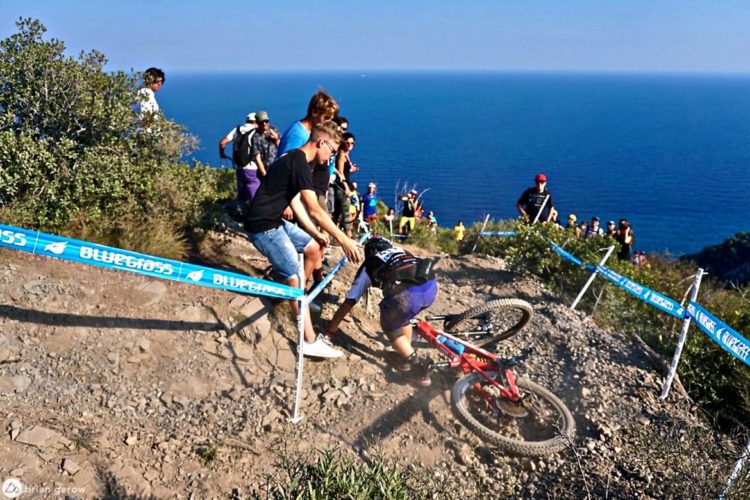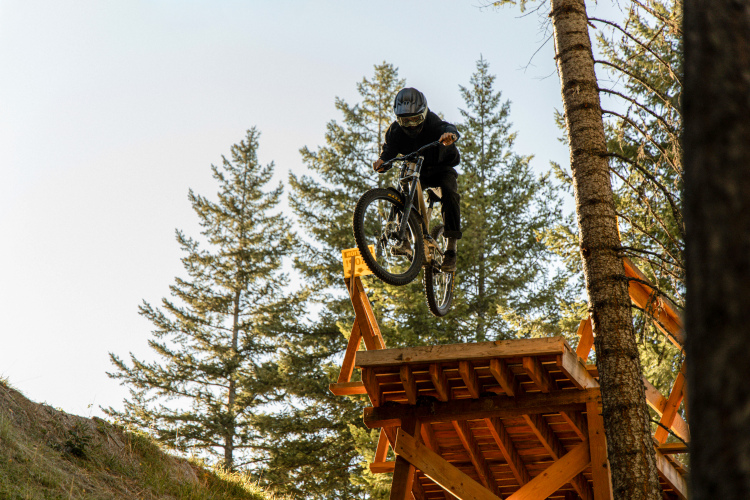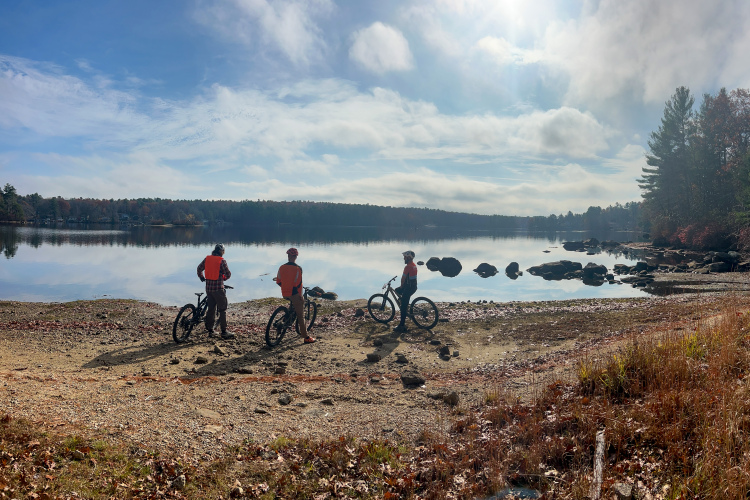Mark Wilson is an unassuming man. A proud father of three, he works with students across the globe on various projects and when he has time, he loves to ride his mountain bike. He is an interesting blend of both an introvert and an extrovert. Mark is relatively reserved and quiet much of the time, which speaks to the wisdom and humility that courses unnoticed through this veins. Yet, he is an engaging speaker, gregarious, and has a passionate fund-of-knowledge about everything from vintage diesel Volkswagens, to optimal enduro geometry, to philosophy. Mark is the kind of person that you want to take on a long road trip–he is a true renaissance man that makes you feel smarter after spending just a few minutes with him.

Most people wouldn’t know it by the way he carries himself, but this relatively short, soft-spoken youth pastor loves to shred insanely hard on his mountain bike. He is a difficult person to ride behind, because he is not only impossible to keep up with at times, he pops off bonus features unexpectedly and impulsively, keeping even seasoned riders behind him on their toes. He seems fearless.
That all changed in September 2013. Mark and I were on an annual trip to Moab with a large group of friends. We rode hard every day that week, and were on the pinnacle of our trip: the rowdy ride on The Whole Enchilada.
If you’ve ever ridden it, the ‘Enchilada is a 27-mile route that traverses several western ecosystems, from a high alpine saddle, though dense aspen forests, ending in classic Utah desert. The final part of this trail is the Porcupine Rim DH, arguably the best chunk of singletrack on the planet outside of a bike park.
Dehydrated but determined, we rallied hard that day down that last section of Porcupine. Two riders were ahead of me, including Mark, and I came upon him stunned and slowly getting up from the ground after what appeared to be a hard landing, rubber side up. I did not see the crash, but he said that he went off a jump expecting a large slab of rock to be there to transition to, but it had been moved. Mark knew this trail well, but had not ridden it in a while. He apparently landed on his face hard, but seemed ok, and was able to ride out the last two miles back to our vehicles parked at the bottom.

After the ride, however, he was dizzy and had a headache, so we were confident he sustained a concussion–maybe worse–and agreed he should sit out the next day of riding, maybe more. While we were riding another trail the following day, however, his symptoms worsened and he sought medical attention.
“I noticed driving that I was having a horrible time trying to keep the car between the lines. Later I blew my nose and my cheek inflated because my sinus was punctured. I went immediately to the Urgent Care and then ER and received a CT scan confirming the fractures.” -Mark Wilson
Mark fractured several infra-orbital and maxillary structures, and indeed sustained a concussion. Fortunately, the fractures were non-displaced, and surgery was not indicated. Unfortunately, that singular crash was just the beginning of what has now become two years of ongoing devitalizing symptoms known as Traumatic Brain Injury, or TBI.

Most readers may associate TBI with soldiers returning from war, boxing, or from recent NFL news. This type of brain injury is a common consequence of IED blasts or repeated blows to the skull in some sports. In higher-velocity trauma, the brain may not only sustain direct blows, but also an indirect one known as a coup-countercoup injury. This results when the skull is struck violently (coup) and the brain slams into the opposite side of the skull (counter-coup). The brain “bruises” once on the side it was hit, then again on the countercoup side, which results in a serious concussion (or worse). It was previously thought that concussions healed when symptoms resolved, but more and more evidence suggests these injuries are cumulative and long-lasting. Many are permanent and debilitating.
Mark said that he had 4 concussions as a child.
“[The crash has] impacted me in lots of ways. It’s certainly made me aware of my mortality and humanity. I have limits to how long and hard I can work. If I over do it, TBI symptoms will start appearing. If I experience significant stress, they also reappear. My kids and wife say there are subtle changes in my personality, that I am less patient and more irritable, and at the same time gentler and more appreciative of the moments we have.”-Mark Wilson

Mark took several months off of the bike initially to heal and recuperate, purchasing a road bike to stay in shape and avoid dangerous terrain. By March of the next year he tried riding his mountain bike. His balance was very poor due to the lingering effects of BPPV, or Benign Paroxysmal Positional Vertigo. He states that he had trouble keeping the bike on the trail, and often felt uncoordinated. Any hard effort left him feeling dizzy. Long rides would result in unrelenting head pain, and long, bumpy downhill sections would leave him feeling vertiginous and with an “out of body sensation.”
Approximately 53,000 people die of TBI related injuries every year, from all causes, according to the CDC. These deaths encompass a broad spectrum of morbidity, from subdural hematoma (brain bleeds) to suicide.
Click here to continue reading Part 2.









0 Comments